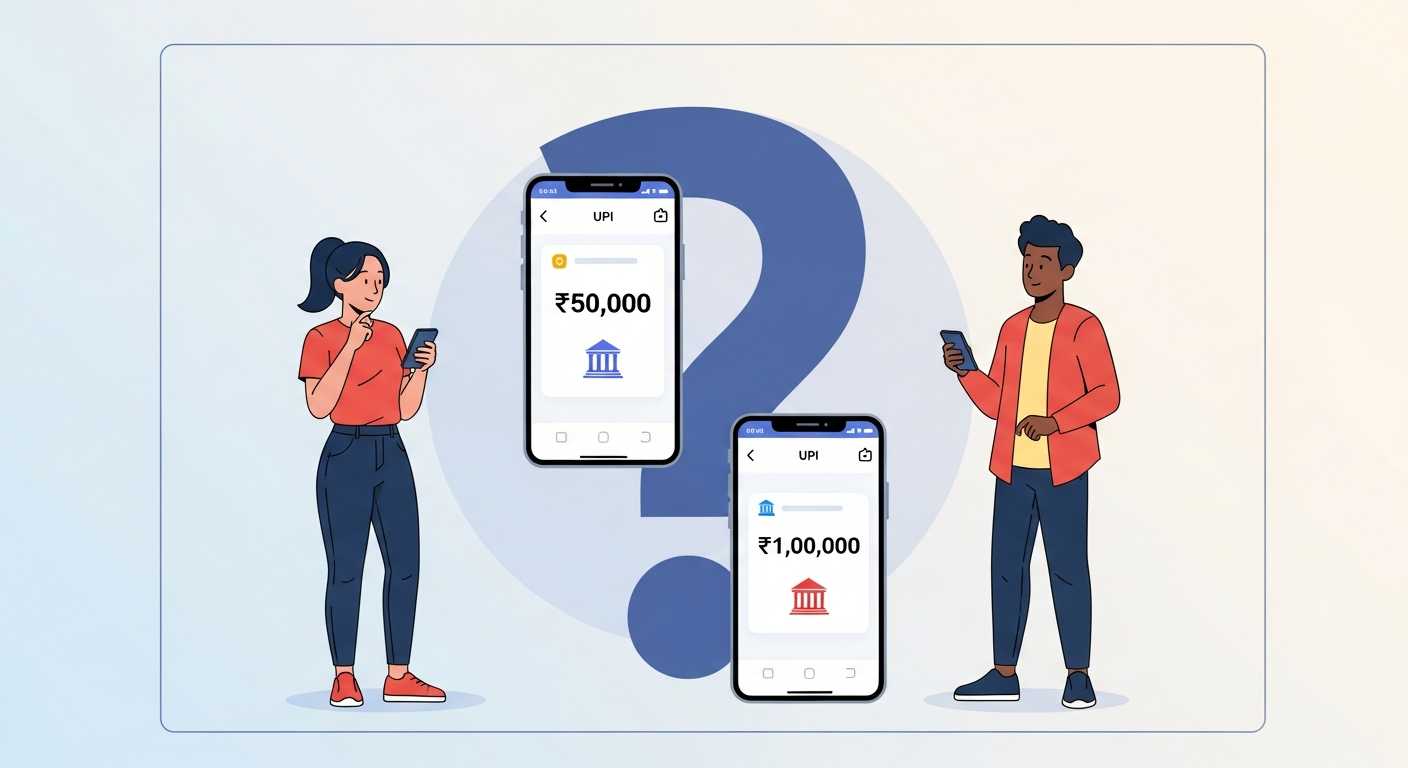UPI has changed the way India makes payments—instant transfers, zero fees, and wide acceptance. But many users wonder:
- Why is there a daily UPI limit?
- Why am I unable to send more than a certain amount?
- Why do banks set different UPI limits?
The short answer:
UPI transaction limits exist mainly for security, risk control, and system stability.
This blog explains the exact reasons behind UPI limits and how they protect you, along with how UPI apps like Paytm show these limits.
1. To Prevent Fraud and Unauthorized Transfers
UPI transactions are instant and irreversible.
This makes them convenient—but also risky if misused.
To protect users, NPCI and banks set transaction limits so that:
- Hackers cannot wipe out an entire bank account in one go
- Fraudsters cannot make unlimited high-value transfers
- Mistaken or unauthorized payments stay minimum
Limits act as a safety shield, preventing massive financial loss.
2. To Control Bank-Level Risk
Every bank handles risk differently.
UPI limits help banks manage:
- Customer safety
- Sudden spikes in fraudulent transactions
- Internal security guidelines
- New or inactive accounts
A bank may temporarily lower UPI limits for accounts that are:
- Newly opened
- Recently activated on UPI
- Not fully KYC-verified
- Showing abnormal transaction patterns
This is why UPI limits differ between banks and from user to user.
3. To Maintain System Stability and Prevent Overload
UPI processes millions of transactions every hour.
If there were no limits:
- The system could slow down
- Servers could face overload
- Processing queues could become too large
Transaction caps help maintain speed, stability, and smooth functioning for all users.
4. To Prevent Misuse by Bots and Automated Systems
UPI transfers are meant for human-to-human and business payments, not automated bot activity.
Without limits, bots could:
- Create millions of micro transactions
- Overload the network
- Cause delays across the UPI ecosystem
Daily and hourly limits prevent such abuse.
5. To Reduce Impact of Human Errors
UPI payments happen instantly.
If you make a mistake—like sending to the wrong number—you cannot reverse it instantly.
Limits reduce the possible damage by:
- Minimizing accidental high-value transfers
- Providing room to detect mistakes
- Allowing time for user verification
Smaller caps help users avoid costly errors.
6. To Encourage Safe Banking Practices
UPI limits motivate users to:
- Keep their UPI PIN safe
- Avoid resetting UPI PIN unnecessarily
- Complete KYC to remove restrictions
For example, in Paytm, if your KYC is incomplete, the system may apply additional limits to keep your account safer.
7. To Comply With Regulatory Guidelines
Banks follow strict rules from RBI and NPCI.
These include:
- Risk caps
- Transaction ceilings
- Cooling periods after PIN resets
- Daily transaction count limits
UPI limit policies help banks stay compliant and ensure controlled, secure financial activity.
How Paytm Shows UPI Limits
Even though your limit is set by your bank, Paytm clearly displays it under your UPI-linked bank account.
The app simply reflects the:
- Daily limit
- Per-transaction limit
- Remaining balance for the day
This helps you understand how much you can transfer without hitting errors like “Limit exceeded” or “Bank limit reached.”
Do UPI Limits Ever Increase Automatically?
Yes.
Your bank may increase your limit automatically when:
- Your account gets older
- Your KYC is fully completed
- You maintain good transaction history
- Your risk score improves
Your UPI app, such as Paytm, will automatically reflect the updated bank limit.
Conclusion
UPI transaction limits exist for several important reasons:
- Security
- Fraud prevention
- System stability
- Risk management
- Regulatory compliance
Although these limits may seem restrictive, they are essential for protecting users and ensuring smooth functioning of the UPI ecosystem. Apps like Paytm simply display the limit your bank has assigned, ensuring transparency so you always know how much you can transact.
Understanding why these limits exist helps you use UPI more safely and efficiently.



